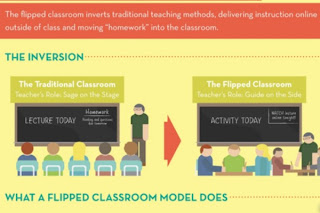What Will Teaching in the 21st Century be Like?
Group: Raphael
Video Introduction:
"Mr. Dancealot"
By: Lisa Smith, Heather Smith, Briann Smith, and Amanda Weller
Mr. Dancealot is unfortunately a typical class for many students. The professor lectures but the concepts are never thoroughly explained or covered. Students are expected to listen to directions rather than be taught the steps of the dance. Some things must be taught physically, rather than verbalizing a physical movement. Using these teaching methods will display serious negative consequences. PowerPoint presentations should not be the only learning tool that your Professor uses. There should be activities for hands on experience because statistics show that people learn better by actually doing it rather than just being told about it. During the times that Mr. Dancealot did present to the class a dance move, he had a desk blocking his movements and he taught from a far distance. This is not a good teaching method. Teaching, especially a class as physically involved as dance, should be hands-on. He also did not allow movement or talking in his classroom. Mr. Dancealot failed as an educator, failed to realize the proper way to teach dance, and he failed to educate a single person in his class. Mr. Dancealot is a prime example of how a teacher’s teaching technique can hinder a student’s ability to learn and understand information. He gave poor instructions and expected the class to follow along. The lesson he gave was rushed and lacked the adequate information that the students needed to prepare for the final. For the dance lesson, Dr. Dancealot should have created an in-class activity that allowed the students to practice using the dance steps and participate in a mock test. By creating an in class activity, the students would have been able to rehearse the dance steps and get an idea of what the final would include. The in-class activity would also give the students a chance to ask questions about any of the dance material that was confusing to them.
Teaching in the 21st Century
By: Heather Smith
Teaching in the 21st century means realizing you are not the only source of information to students. Knowledge can be found anywhere at anytime. Educators have shifted from supplying knowledge to filtering it, according to Roberts. Being technologically savvy will result in better learning and communicating with students. People may question the negative aspects of using vast amounts of technology, but as Roberts stated, tools provide temptation, but they are not the source of negative behavior. These technological tools were viewed as entertainment alone, but now they are more than that. Entertainment is using creativity of others, engagement is using the creativity of the participant. Lessons need to be relevant, challenging, and engaging, regardless of what tool used to accomplish this. Teaching in the 21st century, according to Roberts, means there is a necessity for devices.
A necessity to use any and all means available to a teacher and student in order to obtain the maximum amount of knowledge. This means teachers should use every possible resource available, including devices and their software, apps, blogs, sites, etc. I agree totally with Roberts thesis. If there are options available that will enhance the learning experience, then they should be used. If there are options that will allow students to better remember, understand, apply, analyze, evaluate, and create- then use those options! As a future educator I believe teaching will incorporate the use of all available tools on the web available. I think it will take more time than should be allowed, but educators will soon realize that things are evolving and the teaching methods used today must evolve as well to handle the need for a “teacher”.
Flipping the Classroom
By: Amanda Weller
Flipping the Classroom discusses the importance of the old learning techniques, learning online, and bringing homework into the classroom. Its purpose is to bring learning to a whole new level. Flipping the Classroom was created and modified by Dr. Lodge. His creation is going to allow more creativity and students to get a more hands on experience with technology.
What a student does in the classroom can now be done at home. It will give teachers more time to teach, ask questions, and spend more time with the class. As of now, Flipping the Classroom is only being used for mathematics and it is being used for any grade level.
So far the expectations are high and students are coming to class with questions about material they are unsure of. Teacher's are finding this new technology very useful because they are able to see what activities the students are doing and how they are doing. Flipping the Classroom is a new and exciting experience that is going to help change and promote a higher level of learning!
The Networked Student
By: Lisa Smith
The networked student uses information from teachers, fellow classmates, and the internet circle to further their career's in learning. It starts with the student’s ability to learn new technologies and to think outside of the traditional classroom. The student is given an enormous amount of information that he or she will have to absorb and begin adapting to this new way of learning. The student must have access to the internet and have proper technology for this system to work. It will also take many hours of research to get the required information/learning material all in one spot for study. In the end it is up to the student to change their way of learning by becoming the networked student.
First you will get the guidance from your teacher on what topics you need to know about. Then you would ask any questions that you may have about the topic and she will give you feedback so that no one is confused. You will then be instructed to surf the internet and find material to help you on your subject matter. Every time that you locate beneficial material you will add a bookmark to that page. In the end you will put all of your bookmarks into one folder and this will create your textbook for your subject.
Having all the resources at the touch of a fingertip is amazing. It is like no end to learning new things. It is very exciting to know that my own children get to use some of “The networked Student,” ideas in their classrooms now. Through the use of Smart Boards and other handheld devices I can see the changes already beginning to take place. Welcome to the future of learning!
The Digital Classroom
By: Briann Smith
A Day in the Life of a Computer Teacher
The "Harness Your Students’ Digital Smarts is a great video on involving the use of technology in the classroom. The video included a day in the life of a computer teacher and her class in Georgia and how the use of technology has connected them to places all over the world. The teacher, Mrs. Davis, helps her students to understand technology and to become comfortable using it. In her class she teaches on how to use blogs, computer software, and also how to collaborate with people from all over the world by the use of technology. She not only teaches how to use blogs, but she is a blogger herself on the awarded Cool Cat Teacher blog, which has about six thousand readers.
The Brainstorm Team
Mrs. Davis also strongly believes in student involvement and she encourages students to brainstorm and find answers on their own. She describes the pride and empowerment her students feel when they figure out something for his or her self. Mrs. Davis expects the students in her class to use their personal strengths and to think about how they can improve and use their technology skills. She customizes the class’s curriculum by their ability and strengths.
In her computer class, her students are currently learning about Open Sim, a virtual life program. In Open Sim , the students create their own avatars, which are digital representations of a user in any virtual world or any online community. The students also create their own blogs. One student, a girl named Virginia expressed how proud she was of her most recent blog post, a post on rights and responsibilities. The blog post was a collaborative project with other students from around the world on Digi Teen.
The Digi Teen
Digi Teen is a global collaborative platform for student bloggers around the world. The global platform was founded by Mrs. Davis and Julie Lindsey, a teacher in Qatar. Students and teachers from all over the world use Digi Teen to post blogs, connect, and to share ideas.
The Flat Classroom Project
Mrs.Davis and Mrs. Lindsey also founded the Flat Classroom project. The Flat Classroom Project provides a place for students to learn and experience from other students about the trends in technology. The students can collaborate on reports and make videos on the trends in technology. So, they get to experience first hand on the new trends and how to use them.
Technology's Impact in the Classroom
Mrs. Davis’s class is a great example on how the use of technology can really impact a student’s education and a school’s connection with others. The use of technology in a classroom is so important in today's world. It provides students and teachers with a way to learn about new technology and to connect and share with others from all over the world.





Hello Heather, My name is Javious Williams and I must start off by saying you have a very nice and well put together page. On your collaborative post about the video "Mr. Dancealot", I do agree with you guys on certain points about Professor Dancealot teaching skills in the 21st century. Professor Dancealot should have use hands on experience to teach his students the dance steps and allowed them time in class to practice. Another thing that bother me about Professor Dancealot teaching skills was the desk blocking his feet and not allowing the students to see the movement of his feet. Overall the I do think that Professor Dancealot knowledge about technology was up to date with teaching in the 21st century because he use an Ipod and a camcorder. The Ipod was for the music and the camcorder was use to analyze and evaluate the students performance on their final exam. I do agree that most of his teaching methods were poor, but some were pretty good.
ReplyDeleteHi Javious,
DeleteYou know I (we) did not even think of that point. You are correct, though. He did use technology- the powerpoint, the camcorder, and the Ipod. His teaching style was just poor. I made notes through the video in order to write the best I could, but it is apparent I missed a crucial point. Thank you for bringing this to my attention!
This comment applies to the collaborative portion of this post.
ReplyDeleteThorough. Thoughtful. Interesting.
This comment applies to your personal post:
ReplyDelete"People may question the negative aspects of using vast amounts of technology," Do they question the negative aspects? Or do they suggest there are negative aspects? Or do they question the use of technology? I do not think you wrote what you mean to argue. Clarify.
"A necessity to use any and all means available to a teacher and student in order to obtain the maximum amount of knowledge." Incomplete sentence.
Thoughtful. Interesting.